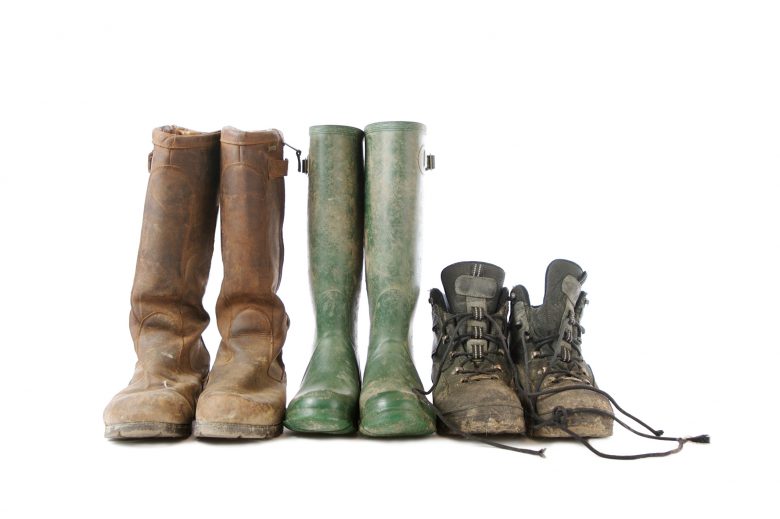Many people are at constant risk of workplace foot injuries caused by sharp objects, molten metals, hot surfaces, electrical hazards, chemicals, wet surfaces, or falling or rolling objects. But most, if not all of these injuries can be prevented by the use of appropriate footwear.
When thinking about protective footwear, it’s easy to forget that it requires constant care to ensure it provides continuing protection. Most workers are used to the idea of footwear getting abused, soiled and damaged in the line of duty, and not taking proper care of work shoes (whatever their type) can lead to their decreased performance. Depending on the type, footwear needs to protect against multiple hazards. And considering the number of hazards that put feet at risk every day, it’s in everyone’s best interest to care for footwear properly.
Protective footwear care
Brand new shoes tend to invite more care, but whatever the age or type of foot-related PPE, constant care and attention is required to ensure continuous performance. It’s important to follow the manufacturer’s instructions and adhere to a few common-sense guidelines for the best footwear care:
- Inspect footwear before each use.
- Check for wear and tear regularly (the amount of time between each inspection will depend on the type of footwear and the intensity of its use). Wear and tear inspections should concentrate on looking for holes, cracks, splits, broken or separated material, change in shape, broken buckles and other signs of damage.
- Check the soles of the shoes for embedded materials (such as pieces of metal).
- Air out shoes after work.
- Follow the manufacturer’s recommendations for cleaning and maintenance, and wet or soiled footwear should be wiped with a clean cloth.
- If the shoes don’t allow for air circulation or cause the feet to sweat too much, workers should consider changing their socks regularly to keep their shoes and feet dry.
- Store the footwear in appropriate conditions. For example, leave protective boots in a cool and dry locker or in their own bag free of debris and dirt. Placing other objects on top of footwear can affect its shape and strength.
- Replace damaged or worn-out shoes immediately unless it’s possible to repair them according to manufacturer’s recommendations.
Education
Worker education is an important aspect of PPE care. Without proper training employees will have a hard time knowing exactly how to use and care for their footwear properly. This can easily lead to the equipment failing to do its job and protect the worker’s feet.
Additionally, workers might choose to ignore the instructions they received on caring for PPE, which can be caused by the wrong type or insufficient training. This should be addressed as soon as possible to avoid damaged footwear and potential injuries. One way to improve PPE use is by implementing human error training that increases safety awareness and reinforces the need to properly care for footwear.
The right type of footwear can be the difference between comfortable and safe working conditions and a serious injury. But protective footwear has to be used correctly and cared for if it’s to function well. Not caring for footwear correctly can lead to its deterioration which, unnoticed and unaddressed, can increase the risk of injuries.

